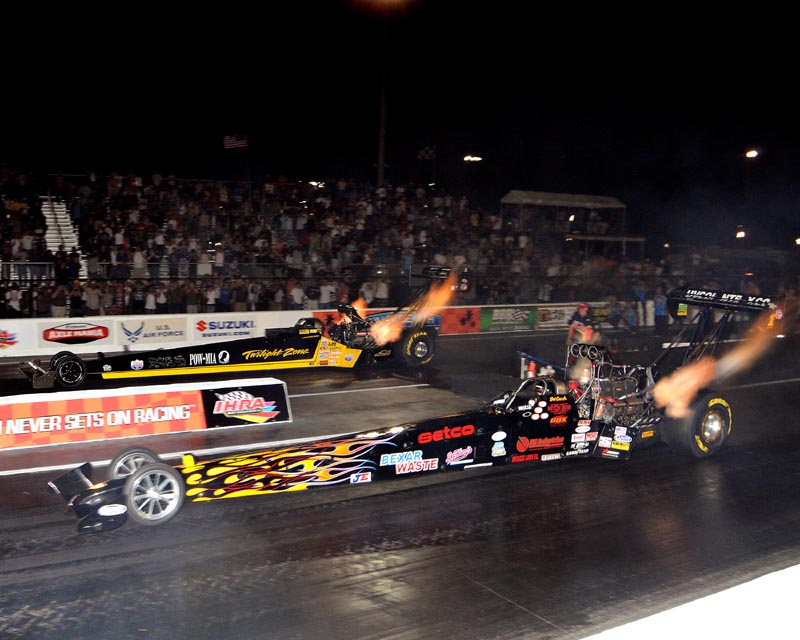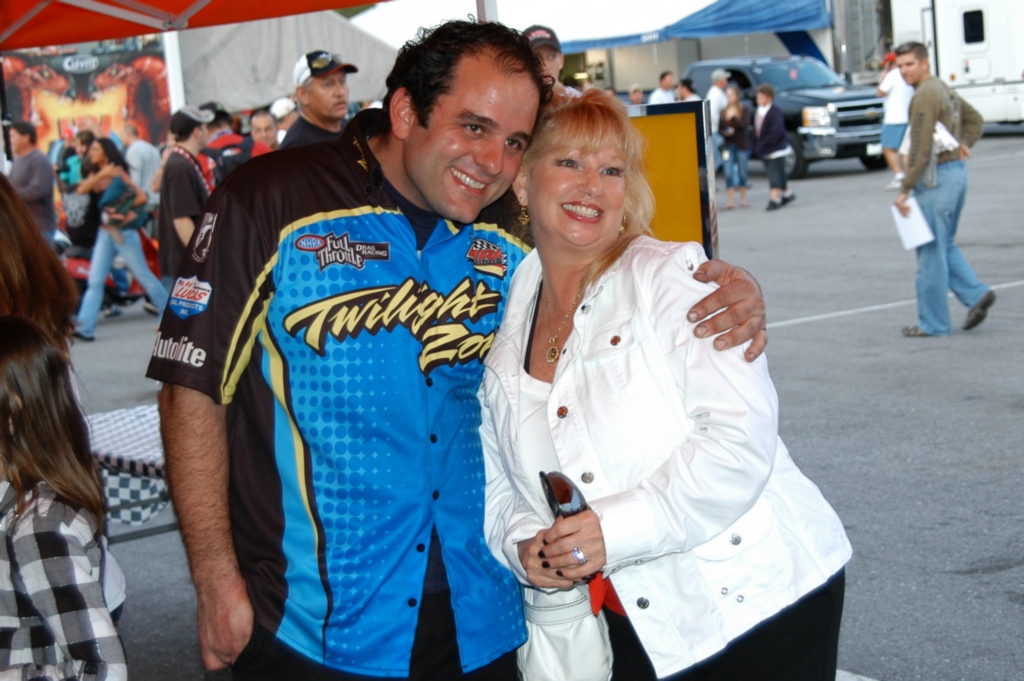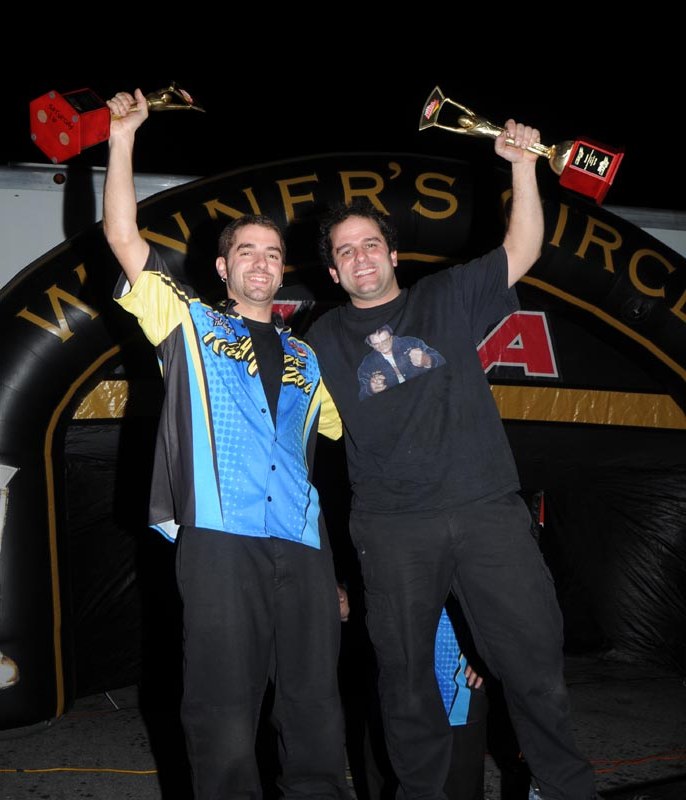LAGANA’S DOUBLE-VICTORY HAS HIM STOKED ABOUT THE FUTURE
Wed, 2010-02-03 17:45
 When the 2010 IHRA season began, veteran Top Fuel driver Bobby Lagana Jr. had his doubts how things were going to work.
When the 2010 IHRA season began, veteran Top Fuel driver Bobby Lagana Jr. had his doubts how things were going to work.“There was a little bit of uncertainty heading into this format,” Lagana Jr. said.
This year, the IHRA trimmed all its Nitro Jam events – except for two – from three days down to two and implemented the “race only” format for professional classes. The pro classes also have invitation-only fields with a new race winner being named at the conclusion of each day of racing.
After the first event Jan. 29-30 at Palm Beach (Fla.) International Raceway, Lagana couldn’t be happier about the changes the sanctioning body made, in large part because he won back-to-back races.
When the 2010 IHRA season began, veteran Top Fuel driver Bobby Lagana Jr. had his doubts how things were going to work.

Lagana embraces an IHRA Nitro Jam fan during the Friday afternoon Fan Fest at Palm Beach International Raceway.
“There was a little bit of uncertainty heading into this format,” Lagana Jr. said.
This year, the IHRA trimmed all its Nitro Jam events – except for two – from three days down to two and implemented the “race only” format for professional classes. The pro classes also have invitation-only fields with a new race winner being named at the conclusion of each day of racing.
After the first event Jan. 29-30 at Palm Beach (Fla.) International Raceway, Lagana couldn’t be happier about the changes the sanctioning body made, in large part because he won back-to-back races.
“The IHRA, West Palm and all the racers and just everybody did an awesome job to make it one heck of a weekend,” said Lagana, whose family has been competing in the IHRA for 30-plus years. “If I was a fan, I would definitely pay $25 to watch that show. I really enjoyed it, and of course the wins made it ridiculously over the edge for us. Winning two races in one weekend is something no one can ever take from us. To be honest, we weren’t sure we wanted to make the commitment to race the full (2010) IHRA schedule until after the first race and after seeing the way the race was run and having as much as we did, I think we’re going to commit to the entire season and try to run for the championship.”
Lagana beat Bruce Litton and Del Cox in Friday and Saturday’s final rounds, respectively.
Claiming two titles when he came to PBIR was the last thing on Lagana’s mind.
“We stay in (Norwalk) Ohio, and we did a lot of maintenance work on the car over the winter and the scary thing is that the first run wasn’t a qualifying run, so we really couldn’t shut it off,” Lagana said. “The pressure was on to make a good run because you were part of the show already. We came out of the box and made a clean run and that started the weekend on a great note and we kind of tuned it up from there. The first run broke the ice and the rest of the weekend flowed from there.”
On Lagana’s first pass, he ran a 4.74-second elapsed timed and beat Spencer Massey who came in at 7.91 seconds.

Lagana, far lane, defeated Del Cox Jr. in Saturday's final round.
Although the IHRA’s wholesale format changes to its races has had many detractors, Lagana is taking things in stride.
“The IHRA has basically provided a place for my family to race the last 30 years, and sometimes you have to change things,” said Lagana, who has competed in every IHRA race since 2002. “Last year, the IHRA crowds were hurting. The way I thought about it was if they didn’t make a change, they were going to be out of business. Mr. (Kenneth) Feld kind of took a chance and tried a new format and I think he did that so everybody could keep their jobs and he kind of hit on something. I think he’s a real honorable man and I’m real happy what he did for the racers. What I hope to see is all the racers who support IHRA get shot to be a part of this because it was definitely something special.”
Lagana also believes inviting and booking four Top Fuelers for events makes sense.
“Last year, there were only four cars that followed the tour for the whole season,” Lagana said. “This year booking in the four takes a lot of pressure off because you don’t feel like you have to beat the clock to get paid. That’s what allowed us to run well right of the bat. I like that format. Everybody is there and they should know they’re going to get paid because they’re putting on a show. I also am a big fan of the two races in a weekend. The fans went crazy over that. Our car was the autograph car, and fans got to sign the car and watch it go down the track and then be a part of the winner’s circle with us.”
Lagana and his team actually adjusted their travel plans to prolong his historic PBIR victories.

Bobby and younger brother Dom celebrate the double win and reportedly the brothers are still celebrating in West Palm Beach, Fla.
Up next for Lagana is the IHRA Nitro Jam March 6-7 at Baton Rouge, La. Then he will compete at the NHRA’s Gatornationals March 11-14 in Gainesville, Fla.
“The excitement level for Baton Rouge is huge, but you have to be really on your toes because the car could have a glitch and not go down the track,” the 32-year-old Lagana said. “That Top Fuel car is only as good as the next run you’re going to make. We’re probably going to run 6 to 8 NHRA races this year depending on previous sponsors and future sponsors. The biggest difference from NHRA to IHRA is how fast you have to try to run (in the NHRA) to be competitive. There are a lot of changes we do in the car when we go over there (to NHRA). Sometimes it takes a run or two to get back into that mode to having the car set on kill. A lot of times when we do some of these match races or IHRA races, we just back it down, so we don’t hurt the parts, but run as quick as we can. When you go over there (to the NHRA) and you want to look the part and play the part, you have to have the car set on kill.”
Advertisement
Categories:




































